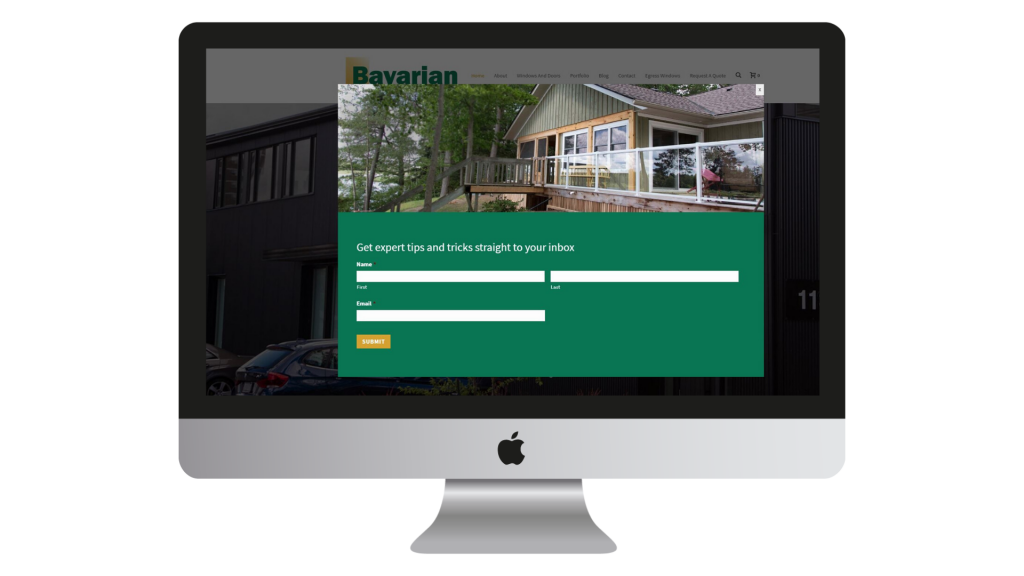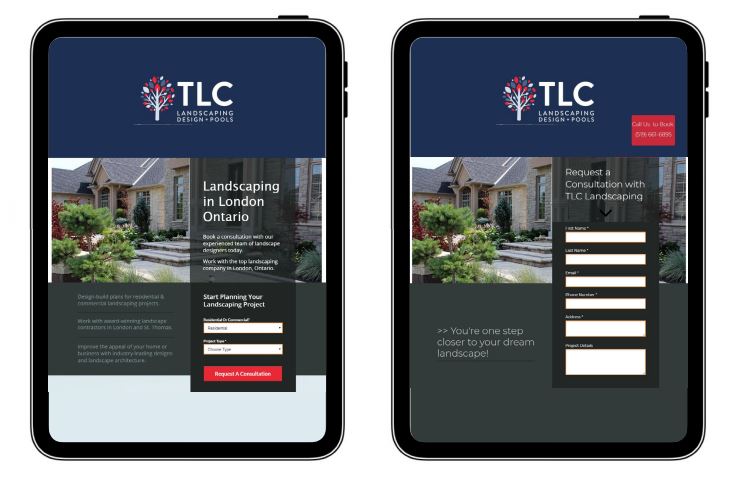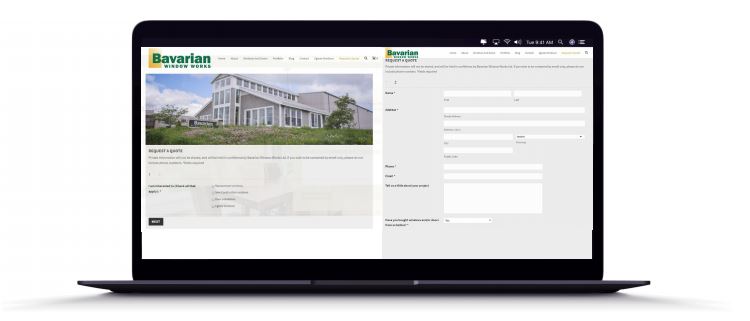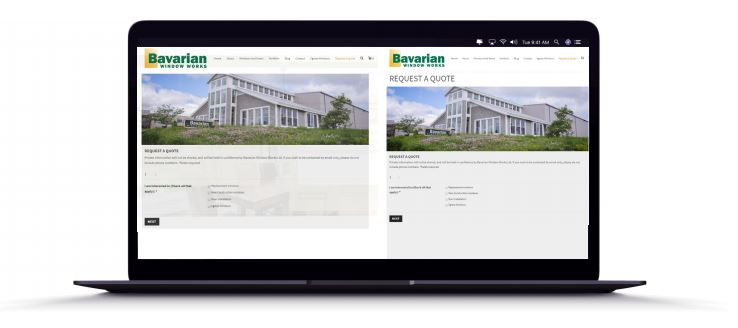4 Types Of Contact Forms For Your Website
By Intrigue
Contact forms on websites come in all shapes and sizes — from a one-field email form to a full mortgage application with hundreds of fields and everything in between.
Finding the right type and size of contact form for your business will unlock your ability to generate leads and grow your business while you sleep!
There is a general rule that applies to all contact forms:
- Small number of fields = more leads, less qualified.
- Large number of fields = less leads, more qualified.
With that rule in mind, let’s look at the four different types of forms.
Types of Contact Forms
1) Email Sign Up
Here’s an example of an email sign up from Eco Paving, an environmental paving company out of British Columbia:
At the top of their website, they have a one-field email sign up form. It is simple and effective and helps build a subscriber base for email marketing.
Quick Note: Besides your website, your email list is likely the only other marketing asset your company owns. Google, social media, and ad space is all leased real estate. Your email list is yours and yours alone. Don’t underestimate the value of emails!
Here’s another example of a website using a pop-up window on the home page to capture leads. The best part is, after we installed this pop up, the bounce rate (people leaving after one page) didn’t go up and the form started growing their email list!

Email Pop Up Window – Popup Maker for Wordpress
The idea behind this pop-up is simple: Not everyone wants to buy right away. Make it easy for you to stay in touch with them.
The last piece to note about email sign-ups is that you need to tell people why to sign up.
In the case of Bavarian Windows, they use the message, “Get expert tips straight to your inbox”. And guess what? It works!
2) Simple Contact Page
This section is pretty straight forward, but there are still a few pieces that need to be addressed.
A. Use contact forms, not an email address.
Email addresses don’t serve you for two main reasons:
First, when someone emails you by clicking your email address, you can’t track that it came through from your website, which also means you can’t track what traffic source created the inquiry.
With a contact form, you can direct a visitor to a Thank You page. This is a page that can only be visited by submitting a form and that allows you to see how people got to your thank you page. For example, if they had clicked on a Google Ad, received an email newsletter, or searched for your website organically. This allows you to track each conversion and, if you reconcile who filled out your forms with who actually turned into customers, you can track ROI to the dollar.
Second, spam bots will email you like crazy if your email is accessible on your webpage. That’s right, robots will email you. They’re actually programs written to crawl the web and send emails to addresses found.
B. Provide context
Tell your users why they should contact you and explain what will happen when they do. Here’s an example from Rammik to illustrate the point.
3) Two-Step Forms
We love two-step forms.
The main reason to use a two-step form is to help people get in touch with you without feeling overwhelmed or over-committed. Asking one or two simple questions for the first step gets people participating. Then, when they get to the second step, they’re more likely to keep filling out the form.
Here are two examples of two-step forms.
The first one is from our friends at TLC Landscaping. The first form is simple, one question. The second form is the info we need to get in touch.

The second example is from Bavarian Window Works and segues nicely into our next type of form. Not only is this a two-step form, but it is also a conditional form. Meaning, different fields appear based on the responses throughout the form.

Using two-step forms is like the best of both worlds. These types of forms can capture more leads that are less qualified and less leads that are more qualified depending on how many steps the user completes.
4) Conditional Forms
These types of forms are a little more complex and technically harder to manage, but they are worth the effort or money if you’re getting a lot of unqualified leads.
Using the Bavarian Windows example again, you’ll notice that if someone picks ‘Replacement Windows’, then another choice pops up asking ‘How many windows are you looking to install?’ with the options of ‘3+’ or ‘Less than 3’.
This allows the team at Bavarian Windows to know which inquiries need immediate attention, as they’re not best suited for replacing one or two windows. Their target audience is looking for large projects and big renovations, not one-off replacements. They know their clients, they know their niche.

Another client of ours, Green Thumb Landscaping, used to spend an enormous amount of time responding to people that they could never serve because they were too far away. So we used conditional forms to inform people that they couldn’t serve them before they even submitted a form.
This simple tactic saves hours of phone calls, email responses, and back and forth with people who will typically not be able to become a client. As an entrepreneur, you know saving time is saving money!
WANT TO LEARN MORE?
DOWNLOAD THE COMPLETE MARKETING GUIDE TO GENERATING LEADS NOW

